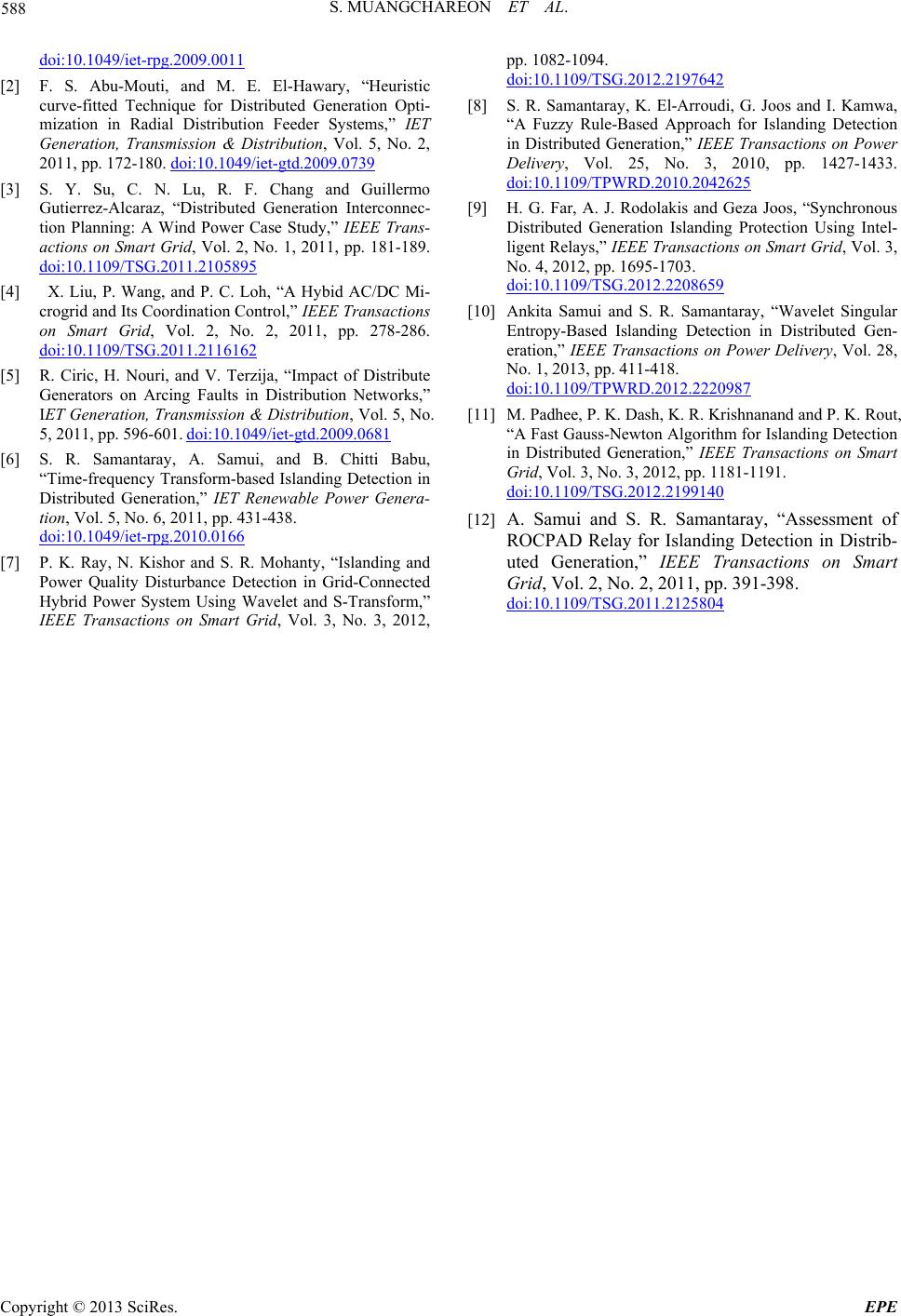
S. MUANGCHAREON ET AL.
588
doi:10.1049/iet-rpg.2009.0011
[2] F. S. Abu-Mouti, and M. E. El-Hawary, “Heuristic
curve-fitted Technique for Distributed Generation Opti-
mization in Radial Distribution Feeder Systems,” IET
Generation, Transmission & Distribution, Vol. 5, No. 2,
2011, pp. 172-180. doi:10.1049/iet-gtd.2009.0739
[3] S. Y. Su, C. N. Lu, R. F. Chang and Guillermo
Gutierrez-Alcaraz, “Distributed Generation Interconnec-
tion Planning: A Wind Power Case Study,” IEEE Trans-
actions on Smart Grid, Vol. 2, No. 1, 2011, pp. 181-189.
doi:10.1109/TSG.2011.2105895
[4] X. Liu, P. Wang, and P. C. Loh, “A Hybid AC/DC Mi-
crogrid and Its Coordination Control,” IEEE Transactions
on Smart Grid, Vol. 2, No. 2, 2011, pp. 278-286.
doi:10.1109/TSG.2011.2116162
[5] R. Ciric, H. Nouri, and V. Terzija, “Impact of Distribute
Generators on Arcing Faults in Distribution Networks,”
IET Generation, Transmission & Distribution, Vol. 5, No.
5, 2011, pp. 596-601. doi:10.1049/iet-gtd.2009.0681
[6] S. R. Samantaray, A. Samui, and B. Chitti Babu,
“Time-frequency Transform-based Islanding Detection in
Distributed Generation,” IET Renewable Power Genera-
tion, Vol. 5, No. 6, 2011, pp. 431-438.
doi:10.1049/iet-rpg.2010.0166
[7] P. K. Ray, N. Kishor and S. R. Mohanty, “Islanding and
Power Quality Disturbance Detection in Grid-Connected
Hybrid Power System Using Wavelet and S-Transform,”
IEEE Transactions on Smart Grid, Vol. 3, No. 3, 2012,
pp. 1082-1094.
doi:10.1109/TSG.2012.2197642
[8] S. R. Samantaray, K. El-Arroudi, G. Joos and I. Kamwa,
“A Fuzzy Rule-Based Approach for Islanding Detection
in Distributed Generation,” IEEE Transactions on Power
Delivery, Vol. 25, No. 3, 2010, pp. 1427-1433.
doi:10.1109/TPWRD.2010.2042625
[9] H. G. Far, A. J. Rodolakis and Geza Joos, “Synchronous
Distributed Generation Islanding Protection Using Intel-
ligent Relays,” IEEE Transactions on Smart Grid, Vol. 3,
No. 4, 2012, pp. 1695-1703.
doi:10.1109/TSG.2012.2208659
[10] Ankita Samui and S. R. Samantaray, “Wavelet Singular
Entropy-Based Islanding Detection in Distributed Gen-
eration,” IEEE Transactions on Power Delivery, Vol. 28,
No. 1, 2013, pp. 411-418.
doi:10.1109/TPWRD.2012.2220987
[11] M. Padhee, P. K. Dash, K. R. Krishnanand and P. K. Rout,
“A Fast Gauss-Newton Algorithm for Islanding Detection
in Distributed Generation,” IEEE Transactions on Smart
Grid, Vol. 3, No. 3, 2012, pp. 1181-1191.
doi:10.1109/TSG.2012.2199140
[12] A. Samui and S. R. Samantaray, “Assessment of
ROCPAD Relay for Islanding Detection in Distrib-
uted Generation,” IEEE Transactions on Smart
Grid, Vol. 2, No. 2, 2011, pp. 391-398.
doi:10.1109/TSG.2011.2125804
Copyright © 2013 SciRes. EPE